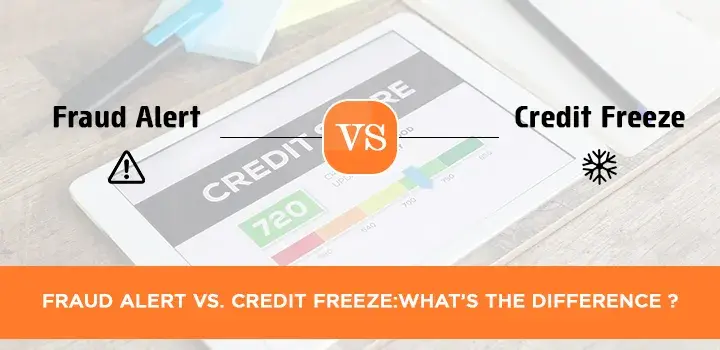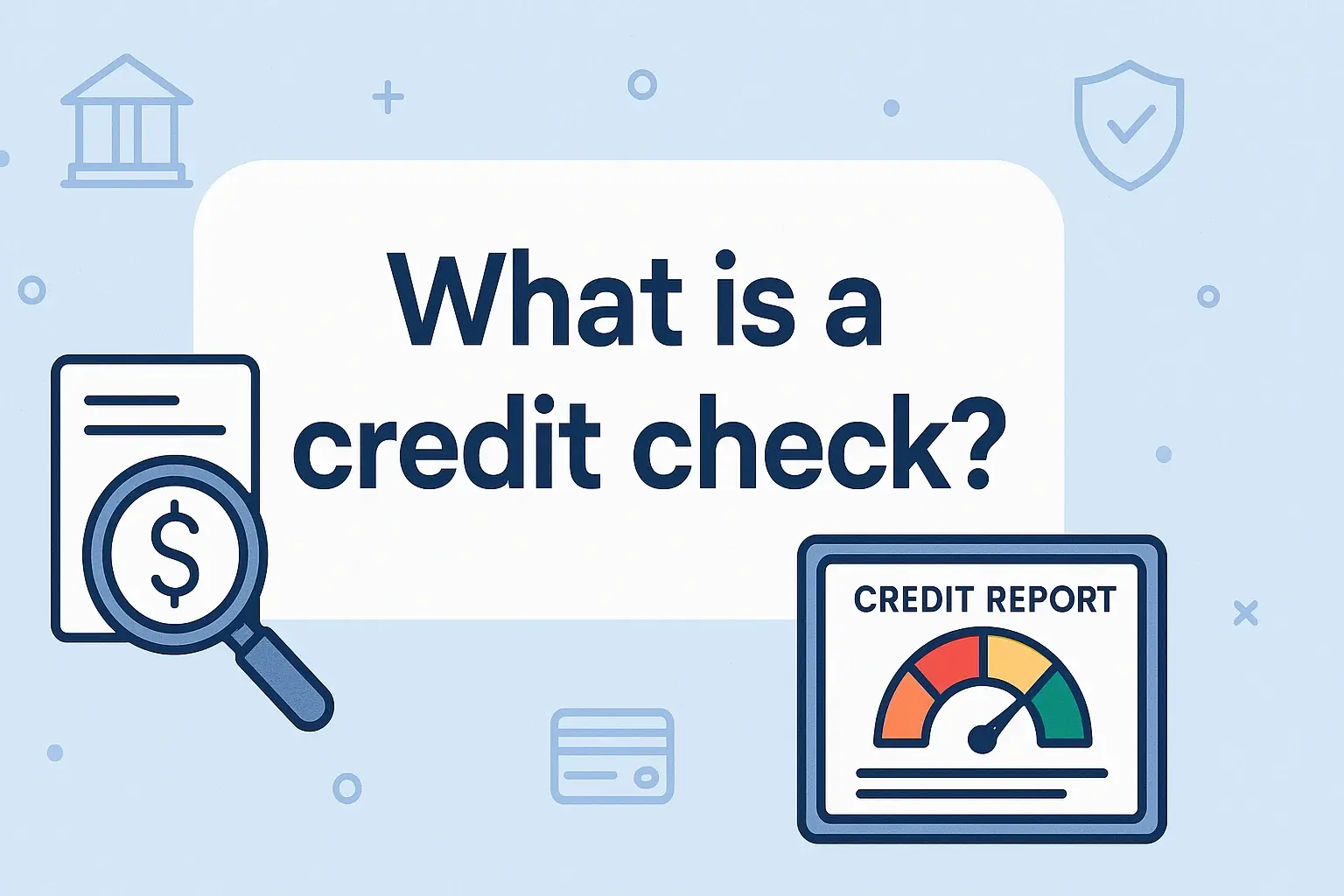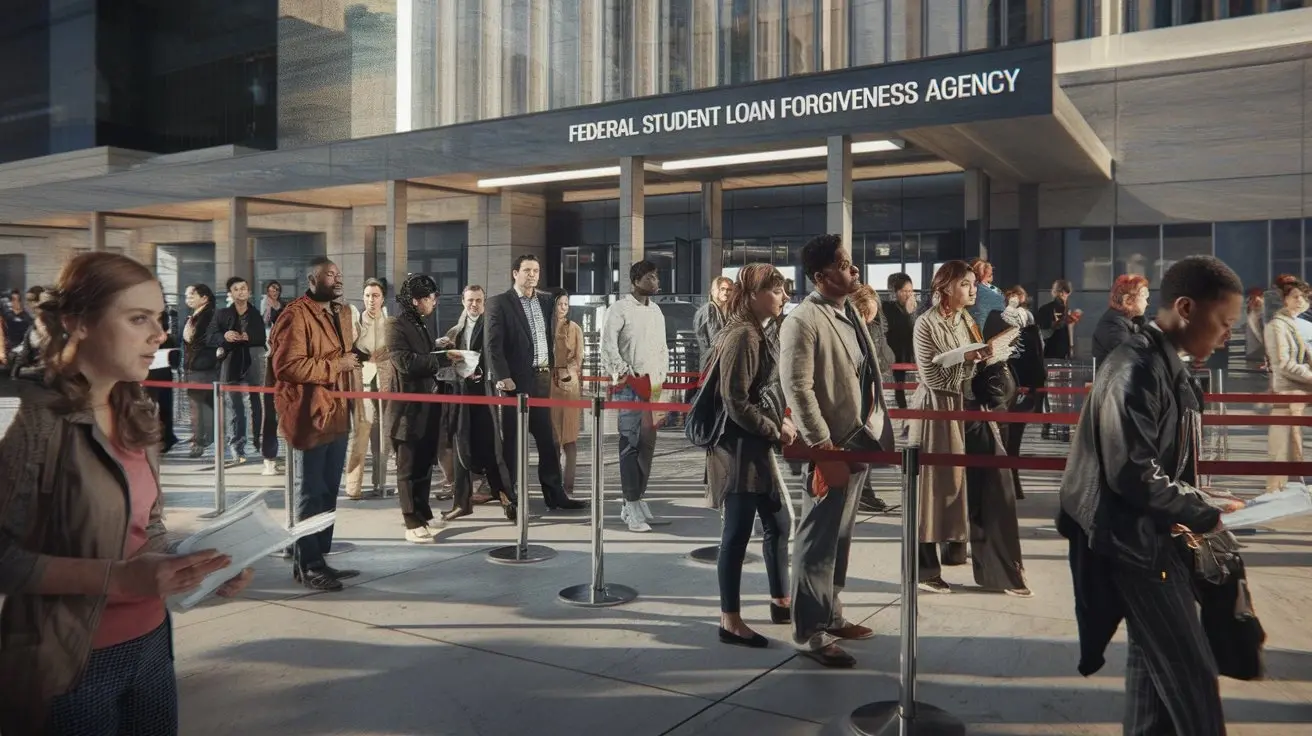-
Posted on: 21 Dec 2022

-
Understanding the nuances between a fraud alert and a credit freeze is crucial for safeguarding your financial identity. This guide clarifies their differences, helping you choose the right protection against potential identity theft in 2025.
What is a Fraud Alert?
A fraud alert is a notification placed on your credit report that signals to lenders and creditors that they should take extra steps to verify your identity before opening new credit accounts in your name. It's a proactive measure designed to deter identity thieves by making it harder for them to use your personal information to open fraudulent lines of credit. When a fraud alert is active, businesses are required to contact you directly to confirm the legitimacy of any new credit application. This serves as an immediate red flag, alerting you to potential misuse of your identity.
How Fraud Alerts Work
When you place a fraud alert with one of the three major credit bureaus (Equifax, Experian, or TransUnion), that bureau is obligated to notify the other two. This ensures that the alert is present across all your credit reports. The alert prompts creditors to implement additional identity verification procedures. This might involve calling you at a phone number listed on your credit report, sending a letter to your address, or requesting additional documentation before approving a credit application. The goal is to prevent unauthorized accounts from being opened, thereby protecting your credit score and financial well-being.
The Purpose of a Fraud Alert
The primary purpose of a fraud alert is to add a layer of security to your credit file. It acts as an early warning system, making it more difficult for someone to impersonate you and open new credit accounts. While it doesn't prevent all forms of identity theft, it significantly raises the barrier for new account fraud, which is a common tactic used by identity thieves. By forcing creditors to verify your identity, it provides you with an opportunity to intervene if a fraudulent application is attempted.
Types of Fraud Alerts
There are two main types of fraud alerts available, each offering a different level of protection and duration. Understanding these distinctions is key to selecting the most appropriate option for your situation.
Initial Fraud Alert
An initial fraud alert is designed for individuals who suspect their personal information may have been compromised, but haven't yet detected any fraudulent activity. This alert typically lasts for one year. It's a good first step if you've experienced a data breach, lost your wallet, or have other reasons to believe your identity might be at risk. It provides a baseline level of protection and encourages creditors to be more vigilant.
Extended Fraud Alert
An extended fraud alert is for victims of identity theft. Once you've confirmed that your identity has been stolen and used fraudulently, you can request an extended fraud alert. This type of alert lasts for seven years. To qualify for an extended fraud alert, you usually need to provide an identity theft report or affidavit to the credit bureau. This heightened alert level signifies a more severe risk and requires creditors to take more stringent verification measures.
Active-Duty Alert
For members of the U.S. Armed Forces deployed away from home, an active-duty alert is available. This alert is valid for one year and can be renewed as long as the service member is on active duty. It is designed to protect military personnel from identity theft while they are deployed and may have limited access to their personal information and credit reports. This alert also requires creditors to take extra steps to verify the identity of the applicant.
How to Place a Fraud Alert
Placing a fraud alert is a straightforward process that can be initiated with any of the three major credit bureaus. The bureau you contact will then inform the other two. Here’s a step-by-step guide:
Contact One of the Three Credit Bureaus
You can initiate a fraud alert by contacting Equifax, Experian, or TransUnion. It's generally recommended to start with the bureau that has the most comprehensive credit file for you, though any bureau will suffice. You can typically do this online, by phone, or by mail.
Equifax Contact Information
Visit the Equifax website or call their dedicated fraud line. They provide online tools for placing alerts, as well as phone numbers for direct assistance.
Experian Contact Information
Experian also offers online services and phone support for fraud alerts. Their website is the primary portal for initiating this process.
TransUnion Contact Information
TransUnion provides similar options for placing fraud alerts through their website or customer service lines.
Provide Necessary Information
You will need to provide your full name, address, date of birth, and Social Security number to verify your identity. If you are placing an extended fraud alert, you will also need to submit documentation, such as an identity theft affidavit or a police report, to prove you are a victim of identity theft.
Verification Process
The credit bureau will review your request and verify your identity. Once confirmed, they will place the fraud alert on your credit report and notify the other two bureaus. You should receive confirmation from each bureau, often by mail, detailing the type of alert and its expiration date.
What is a Credit Freeze?
A credit freeze, also known as a security freeze, is a more stringent measure than a fraud alert. When you place a credit freeze on your credit report, it restricts access to your credit file, preventing new creditors from viewing your report. This effectively stops them from opening new accounts in your name. Essentially, it locks down your credit, making it impossible for anyone, including yourself, to access your credit report without temporarily lifting the freeze.
How a Credit Freeze Works
When a credit freeze is in place, any entity that attempts to pull your credit report for a new credit application will be denied access. This means that if an identity thief tries to open a credit card, loan, or utility account in your name, the application will be rejected because the creditor cannot access your credit information. This provides a very strong barrier against new account fraud. You will receive a personal identification number (PIN) from each credit bureau, which you will need to temporarily "unfreeze" your credit when you need to apply for credit yourself.
The Purpose of a Credit Freeze
The primary purpose of a credit freeze is to prevent new credit accounts from being opened in your name. It is the most effective way to stop identity thieves from exploiting your credit report for financial gain through new account fraud. Unlike a fraud alert, which relies on creditors taking extra steps, a freeze directly blocks access to your credit information, making it impossible to open new lines of credit without your explicit consent and the use of your PIN.
How to Place a Credit Freeze
Placing a credit freeze is similar to placing a fraud alert in that you must contact each of the three major credit bureaus individually. However, the process for lifting the freeze requires the use of a PIN.
Contact Each Credit Bureau Individually
You must contact Equifax, Experian, and TransUnion separately to place a credit freeze. This is a critical distinction from fraud alerts, where contacting one bureau notifies the others. For a credit freeze, each bureau requires its own request.
Equifax Freeze Process
Visit the Equifax website or call their customer service. You will be guided through the process of requesting a freeze and will receive a confirmation and a PIN.
Experian Freeze Process
Similar to Equifax, Experian provides an online portal and phone support for placing a credit freeze. Ensure you obtain your PIN from Experian.
TransUnion Freeze Process
TransUnion also offers a dedicated process for security freezes. Follow their instructions carefully and keep your PIN in a secure location.
Provide Required Information
You will need to provide personal identifying information, including your name, address, date of birth, and Social Security number. You may also need to provide additional information to confirm your identity, such as previous addresses or information from your credit report.
Receive and Secure Your PIN
Upon successful placement of the freeze, each credit bureau will issue you a unique Personal Identification Number (PIN). This PIN is essential for temporarily lifting or permanently removing the freeze. It is crucial to keep your PINs in a safe and memorable place, as losing them can create significant inconvenience when you need to access your credit.
Lifting a Credit Freeze
When you need to apply for credit, you will need to temporarily lift the freeze. This can usually be done online or by phone with each credit bureau, and you will need your PIN. You can choose to lift the freeze for a specific period (e.g., 24-72 hours) or for a longer duration. Once the period expires, the freeze automatically reactivates. You can also permanently remove the freeze if you no longer wish to use this security measure.
Fraud Alert vs. Credit Freeze: The Core Differences
While both fraud alerts and credit freezes are designed to protect your identity from new account fraud, they operate very differently and offer distinct levels of protection. Understanding these differences is paramount to making an informed decision about which, if either, is right for you.
Mechanism of Protection
Fraud Alert: Acts as a warning to creditors. They are notified to take extra steps to verify your identity before opening new credit. It doesn't block access but adds a layer of scrutiny.
Credit Freeze: Actively blocks access to your credit report. Creditors cannot view your credit file, making it impossible to open new accounts without you explicitly lifting the freeze.
Impact on Credit Applications
Fraud Alert: May cause slight delays in credit application processing as creditors perform additional verification. However, it generally does not prevent new credit from being opened if verification is successful.
Credit Freeze: Prevents all new credit applications from being approved because creditors cannot access your credit report. This is its primary strength.
Who is Notified
Fraud Alert: When placed with one bureau, it's shared with the other two. Lenders are notified.
Credit Freeze: You must place a freeze with each of the three bureaus individually. Lenders are blocked from access.
Duration
Fraud Alert: Initial alerts last for one year; extended alerts last for seven years. Active-duty alerts last for one year and are renewable.
Credit Freeze: Remains in place indefinitely until you choose to lift or remove it. You can temporarily lift it for specific periods.
Ease of Use for Yourself
Fraud Alert: Minimal impact on your ability to open new credit. You generally don't need to do anything extra when applying for credit yourself.
Credit Freeze: Requires you to remember to temporarily lift the freeze whenever you or an authorized user (like a co-signer) needs to apply for credit. This can be inconvenient if not managed properly.
Cost
Fraud Alert: Free to place and maintain.
Credit Freeze: Free for most consumers, especially in states that mandate free freezes. Some states may have nominal fees for lifting or removing a freeze, but federal law now mandates free freezes for most individuals.
Feature Fraud Alert Credit Freeze Primary Function Warns creditors; requires extra verification Blocks access to credit report; prevents new accounts Impact on New Credit May cause delays; doesn't outright prevent Prevents new accounts from being opened Action Required by You None, beyond initial placement Temporarily lift freeze for credit applications Notification One bureau notifies others Must place with all three bureaus individually Duration 1 year (initial), 7 years (extended) Until you remove it Cost Free Free for most consumers Who Should Consider a Fraud Alert?
A fraud alert is a suitable option for individuals who have experienced a potential security incident but are not yet victims of confirmed identity theft. It's a proactive step that adds a layer of protection without the inconvenience of a credit freeze.
Individuals Who Have Lost or Had Documents Stolen
If you've lost your wallet, purse, or a device containing personal information, or if documents containing your Social Security number, date of birth, or other sensitive data have been stolen, an initial fraud alert is a wise precaution. This alerts lenders to be extra cautious with any new credit applications made in your name.
Those Affected by Data Breaches
When a company you do business with experiences a data breach, your personal information might be exposed. In such cases, placing a fraud alert on your credit reports is a sensible measure to protect yourself from potential misuse of your compromised data. Many companies will offer credit monitoring services, but a fraud alert adds an extra layer of security to your credit file itself.
People Who Want to Monitor Their Credit Closely
If you are planning to apply for a significant loan (like a mortgage or auto loan) soon and want an added layer of security during that period, an initial fraud alert can provide peace of mind. It ensures that any unexpected activity on your credit report is flagged for further verification.
Victims of Identity Theft Seeking Extended Protection
For those who have already been victims of identity theft, an extended fraud alert is crucial. This seven-year alert signifies a higher risk and prompts creditors to be exceptionally diligent. It's a standard recommendation for anyone who has had their identity stolen and is working to resolve the associated issues.
Who Should Consider a Credit Freeze?
A credit freeze is the most robust form of protection against new account identity theft. It is particularly recommended for individuals who want the highest level of security or have experienced significant identity theft issues.
Individuals Concerned About Identity Theft
If you are highly concerned about the risk of identity theft, especially if you have a common name, have been a victim before, or live in an area with high rates of identity theft, a credit freeze offers the strongest defense. It makes it virtually impossible for criminals to open new accounts in your name.
Those Who Have Experienced Identity Theft
If you have been a victim of identity theft, a credit freeze is often a necessary step to prevent further damage. While an extended fraud alert is also recommended, a freeze provides an immediate and effective block against new fraudulent accounts being opened while you are dealing with the aftermath.
People Not Planning to Apply for Credit Soon
A credit freeze is most practical for individuals who do not anticipate needing to apply for new credit in the near future. If you are not planning to get a mortgage, car loan, or new credit card for an extended period, a freeze can offer continuous protection without the need for frequent unfreezing.
Parents or Guardians Protecting Minors
Children are increasingly targeted by identity thieves because their credit reports are often clean and can be used for fraudulent purposes for years before being discovered. Parents can place a credit freeze on their child's credit report to prevent this. In 2025, this is a growing concern, and many experts recommend freezing credit for minors.
Benefits of Fraud Alerts
Fraud alerts offer a valuable, accessible layer of protection against identity theft, particularly for new account fraud, with minimal disruption to your financial life.
Increased Vigilance from Creditors
The primary benefit is that creditors are put on notice. They are required to take extra steps to verify your identity, which can deter fraudsters who are looking for easy targets. This means they are less likely to approve a fraudulent application without proper confirmation.
Early Detection of Potential Fraud
If a fraud alert is in place, and someone attempts to open an account in your name, the creditor's attempt to contact you for verification can serve as an early warning. This gives you the opportunity to act quickly and report the fraudulent activity.
Free of Charge
Placing and maintaining a fraud alert is completely free. This makes it an accessible security measure for everyone, regardless of their financial situation.
Minimal Impact on Your Own Credit Applications
Unlike a credit freeze, a fraud alert generally does not significantly hinder your ability to apply for credit yourself. While there might be slight delays due to verification processes, it typically won't prevent you from obtaining the credit you need.
Easy to Implement
Placing a fraud alert is a simple process that can be done online, by phone, or by mail. Contacting one credit bureau is usually sufficient, as they will notify the other two.
Benefits of Credit Freezes
Credit freezes provide the most robust protection against identity theft, acting as a strong barrier against unauthorized account openings.
Strongest Prevention of New Account Fraud
This is the most significant benefit. By blocking access to your credit report, a credit freeze makes it virtually impossible for identity thieves to open new credit accounts in your name. This is the most effective way to combat a common form of identity theft.
Peace of Mind
For many, the knowledge that their credit is locked down provides a significant sense of security, especially in an era of frequent data breaches and rising identity theft rates.
Free for Most Consumers
Thanks to federal legislation, credit freezes are free for all consumers to place and maintain. This makes this powerful security tool accessible to everyone.
Protection for Minors
Parents can place credit freezes on their children's credit reports to protect them from identity theft, which can have long-lasting consequences if not addressed early. This is a critical tool for safeguarding a child's financial future.
Can Be Temporarily Lifted
While a freeze is restrictive, it's not permanent. You can easily and quickly lift the freeze temporarily when you need to apply for credit, and it will automatically re-freeze after the specified period, offering continuous protection.
Limitations of Fraud Alerts
While beneficial, fraud alerts are not foolproof and have certain limitations that consumers should be aware of.
Does Not Prevent All Types of Fraud
A fraud alert primarily addresses new account fraud. It does not prevent identity thieves from using your existing accounts, filing fraudulent tax returns, or committing other types of identity theft that don't involve opening new credit.
Relies on Creditor Compliance
The effectiveness of a fraud alert depends on creditors following the required procedures. While laws mandate verification, there's always a small chance a creditor might overlook the alert or fail to implement proper checks, especially in high-volume situations.
May Cause Delays in Credit Applications
While not a complete block, the extra verification steps required by a fraud alert can sometimes lead to delays when you are trying to open new credit yourself. This can be frustrating if you need credit quickly.
Limited Duration
Initial fraud alerts expire after one year, meaning you need to remember to renew them if you want to maintain protection. Extended alerts last longer but still have an expiration date.
Does Not Prevent Access to Credit Reports
A fraud alert does not prevent legitimate or fraudulent parties from accessing your credit report. It only signals that extra verification is needed. A credit freeze is the only measure that actively blocks access.
Limitations of Credit Freezes
Despite their strength, credit freezes also have drawbacks that can impact your financial activities.
Inconvenience for Authorized Users
If you have authorized users on your credit cards, they may encounter issues if they try to use the card and a new credit check is triggered. You would need to temporarily lift the freeze for them.
Potential Delays for Yourself
The most significant limitation is the inconvenience it poses when you need to apply for credit. You must remember to lift the freeze, which can take time and requires you to manage your PINs effectively. Failing to lift the freeze can result in rejected applications for mortgages, car loans, or even some rental agreements or utility services.
Does Not Prevent All Types of Fraud
Similar to fraud alerts, a credit freeze primarily protects against new account fraud. It does not prevent identity theft related to existing accounts, medical identity theft, or other forms of fraud that do not require opening new credit lines.
Requires Individual Action for Each Bureau
You must place a credit freeze with Equifax, Experian, and TransUnion separately. This requires more effort than placing a fraud alert.
Managing PINs
You are responsible for keeping your PINs secure and accessible. Losing a PIN can make it difficult to manage your credit freeze, potentially leading to significant inconvenience.
Managing Your Credit with Alerts and Freezes
Effectively managing your credit when you have a fraud alert or credit freeze in place requires a proactive approach and good record-keeping.
Keeping Your Contact Information Up-to-Date
For fraud alerts, ensuring that your contact information (phone number and address) with the credit bureaus is current is vital. This is how creditors will attempt to reach you for verification. If your information is outdated, the alert may be less effective.
Organizing and Securing Your PINs
For credit freezes, create a system for storing your PINs. A secure digital vault, a password manager, or a safely stored physical note can help. Avoid storing them in obvious places. When you need to lift a freeze, have the PINs readily available.
Planning for Credit Applications
If you have a credit freeze, plan ahead for any credit applications. Contact the credit bureaus to lift the freeze a few days in advance of your application to avoid delays. Understand the duration for which you are lifting the freeze and when it will automatically re-apply.
Regularly Checking Your Credit Reports
Whether you have an alert or a freeze, it's always a good practice to monitor your credit reports from all three bureaus regularly. You are entitled to a free credit report from each bureau annually via AnnualCreditReport.com. This allows you to spot any unauthorized activity that might have slipped through.
Understanding Exceptions to Freezes
Be aware that certain entities are exempt from needing your permission to access your credit report, even with a freeze. These typically include government agencies for legal or administrative purposes, companies you already do business with for existing accounts, and credit reporting agencies themselves for their own internal use.
Identity Theft Statistics in 2025
The landscape of identity theft continues to evolve, with new trends and statistics emerging annually. In 2025, the threat remains significant, underscoring the importance of robust security measures.
Prevalence of Identity Theft Incidents
According to projections for 2025, the number of identity theft victims is expected to remain high, with millions of individuals falling prey to various forms of fraud. Reports from cybersecurity firms indicate that new account fraud, where thieves open credit in your name, continues to be a primary concern. Data suggests that over 15 million Americans experienced some form of identity fraud in 2024, and this figure is projected to remain stable or slightly increase in 2025.
Types of Identity Theft on the Rise
While traditional credit card fraud persists, other forms are gaining traction. Synthetic identity fraud, where thieves combine real and fake information to create a new identity, is a growing problem. Medical identity theft, where someone uses your information to receive medical services, is also on the rise, often going undetected for longer periods. Furthermore, account takeover fraud, where criminals gain access to your existing accounts, remains a persistent threat.
Impact of Data Breaches
The frequency and scale of data breaches continue to be a major driver of identity theft. In 2025, it's estimated that hundreds of large-scale data breaches will occur, exposing the personal information of millions of consumers. These breaches provide fraudsters with the raw materials—Social Security numbers, dates of birth, addresses—needed to perpetrate identity theft.
Financial Losses Due to Identity Theft
The financial impact on victims is substantial. While victims are often reimbursed for fraudulent charges on credit accounts, the process can be time-consuming and stressful. Beyond direct financial losses, victims often incur significant costs in repairing their credit, legal fees, and lost wages due to time spent resolving issues. The total financial impact of identity theft in the U.S. in 2025 is projected to be in the tens of billions of dollars.
Consumer Awareness and Preparedness
While awareness of identity theft is growing, many consumers still underestimate their personal risk or are unsure of the best protective measures. Surveys in early 2025 indicate that while a majority of people are aware of fraud alerts and credit freezes, only a fraction have implemented them. This gap in preparedness leaves many vulnerable.
When to Use Both a Fraud Alert and a Credit Freeze
In certain situations, employing both a fraud alert and a credit freeze can provide a comprehensive, multi-layered defense against identity theft.
After a Significant Identity Theft Incident
If you have been a victim of identity theft, especially a severe one where multiple accounts were compromised or significant financial damage occurred, using both measures is highly recommended. The extended fraud alert provides ongoing notification, while the credit freeze acts as an immediate, impenetrable barrier against new fraudulent accounts. This dual approach ensures maximum protection while you work to resolve the existing damage.
During Periods of High Personal Risk
If you are going through a period where your personal information might be more vulnerable—for example, if you are dealing with a complex legal matter, are undergoing a contentious divorce where personal information could be misused, or are a public figure whose information is more readily available—combining a fraud alert and a credit freeze offers enhanced security. The alert provides an extra layer of scrutiny, and the freeze offers a robust block.
For Maximum Security and Peace of Mind
Some individuals simply desire the highest level of protection available. For these individuals, placing credit freezes on all their reports and also maintaining fraud alerts can offer unparalleled peace of mind. While it requires more management, especially when applying for credit, the security it provides can be worth the effort for those who prioritize it above all else.
Protecting Children and Vulnerable Adults
When protecting minors or other vulnerable adults who are unlikely to apply for credit themselves, placing a credit freeze on their reports is essential. In addition to the freeze, a fraud alert can be added as an extra layer of vigilance, ensuring that any potential misuse is flagged and investigated thoroughly.
The Cost of Identity Theft in 2025
The financial repercussions of identity theft extend beyond immediate monetary losses, impacting victims in profound and long-lasting ways. Understanding these costs highlights the value of preventative measures.
Direct Financial Losses
While credit card fraud is often resolved by the issuing company, other types of identity theft can lead to direct financial losses. This can include drained bank accounts, fraudulent tax refunds, or medical bills incurred by someone using your identity. In 2025, the average direct financial loss for victims of identity theft is projected to be over $1,500, though this can vary dramatically based on the severity of the crime.
Time and Effort to Resolve
The time spent resolving identity theft issues is often underestimated. Victims spend countless hours on the phone with banks, credit card companies, government agencies, and credit bureaus. They may need to file police reports, complete affidavits, and meticulously review financial statements. The average time spent by victims to resolve identity theft issues in 2025 is estimated to be around 20-30 hours, but for severe cases, it can extend to months or even years.
Damage to Credit Score
Fraudulent activity can severely damage a victim's credit score. This can make it difficult or impossible to obtain loans, rent an apartment, secure utilities, or even get a job. Repairing a damaged credit score can take years of diligent effort and responsible financial behavior.
Emotional and Psychological Toll
Beyond financial and time costs, identity theft takes a significant emotional and psychological toll. Victims often experience stress, anxiety, anger, and a sense of violation. This can impact their well-being, relationships, and overall quality of life.
Legal and Administrative Costs
In some cases, victims may incur legal fees to clear their name or dispute fraudulent claims. There can also be costs associated with obtaining certified copies of documents or paying for credit monitoring services if not provided by a breach victim.
Legal Rights and Protections
Understanding your legal rights and the protections afforded to you is crucial when dealing with identity theft and utilizing security measures like fraud alerts and credit freezes.
Fair Credit Reporting Act (FCRA)
The FCRA is the primary federal law that governs credit reporting agencies and the information they collect and disseminate. It grants consumers the right to access their credit reports, dispute inaccurate information, and place fraud alerts and security freezes on their credit files. The FCRA mandates that credit bureaus notify the other bureaus when a fraud alert is placed.
Identity Theft and Assumption Deterrence Act
This act makes identity theft a federal crime and establishes procedures for victims to report and resolve identity theft issues. It requires credit bureaus to investigate disputes related to identity theft and to remove fraudulent information from credit reports.
Rights Related to Fraud Alerts
Under the FCRA, creditors must take reasonable steps to verify your identity before extending credit when a fraud alert is in place. They must also contact you using the phone number you provided to the credit bureau. For extended fraud alerts, victims have the right to receive free copies of their credit reports from each bureau for a specified period.
Rights Related to Credit Freezes
Federal law now mandates that credit freezes are free for all consumers. You have the right to place a freeze, temporarily lift it, and permanently remove it at no cost. The credit bureaus must respond to your requests to place, lift, or remove a freeze within a specified timeframe (typically one business day for electronic requests and three business days for mail requests).
Liability for Unauthorized Charges
The Fair Credit Billing Act (FCBA) limits your liability for unauthorized charges on credit cards to $50. For debit cards, your liability can range from $0 to $500, depending on how quickly you report the fraud. However, prompt reporting is key to minimizing your financial exposure.
Conclusion: Making the Right Choice
Navigating the complexities of identity protection in 2025 requires understanding the tools at your disposal. A fraud alert serves as a crucial warning, prompting creditors to exercise extra caution and verify your identity before opening new accounts. It's an excellent first line of defense for those who have experienced a potential compromise or wish for heightened awareness. On the other hand, a credit freeze is a more robust measure, actively blocking access to your credit report and effectively preventing any new credit from being opened in your name without your explicit consent and the use of your PIN. While it requires more management, especially when you need to apply for credit yourself, it offers the highest level of security against new account fraud. For many, especially those who have been victims of identity theft or seek maximum peace of mind, implementing credit freezes on all three credit bureaus is the most prudent strategy. Ultimately, the best choice depends on your individual risk tolerance, financial situation, and proximity to needing new credit. Consider your circumstances carefully, and remember that proactive protection is always more effective than reactive recovery.










